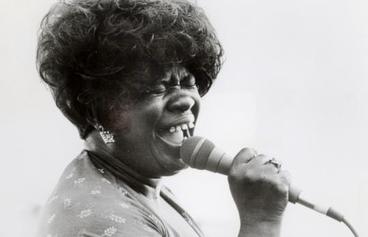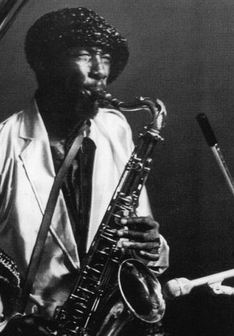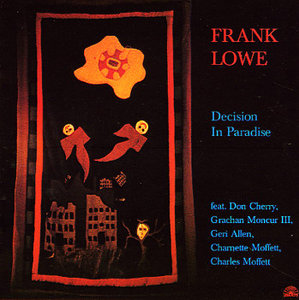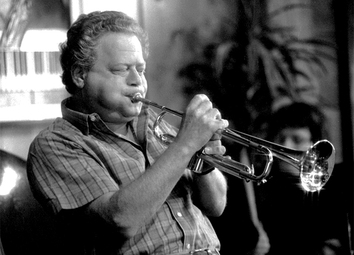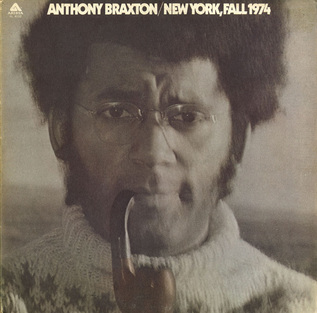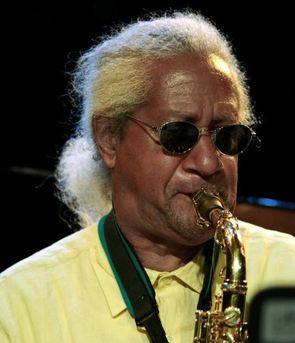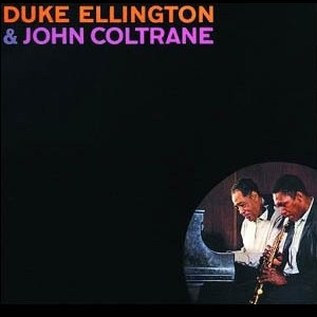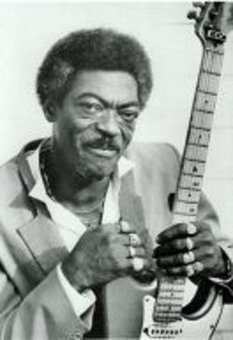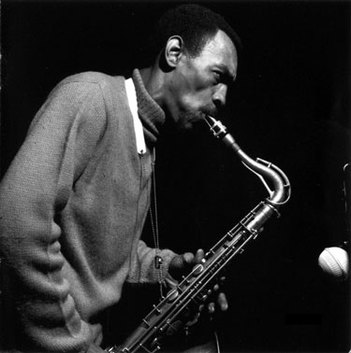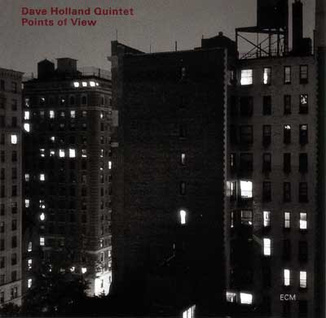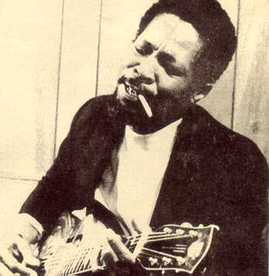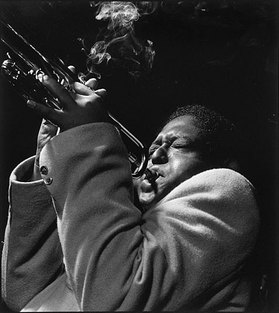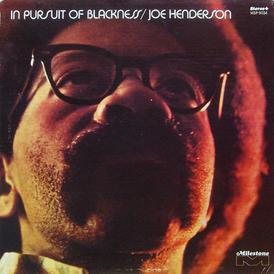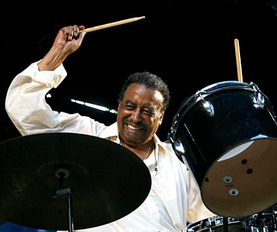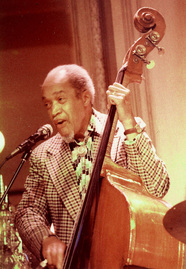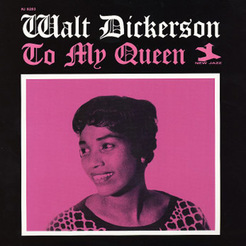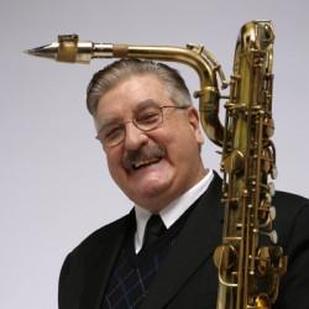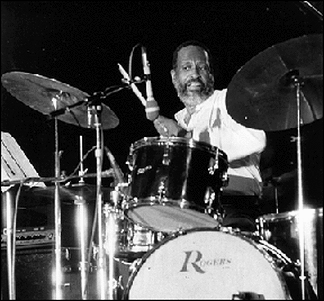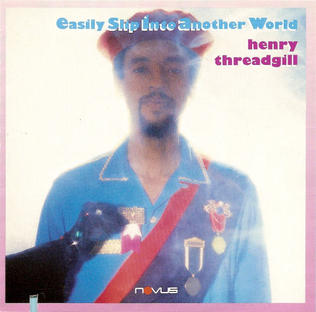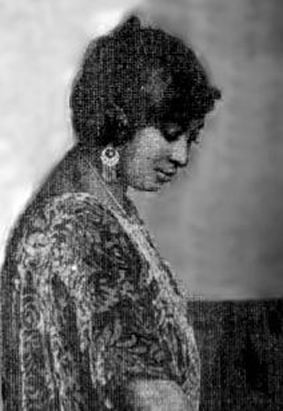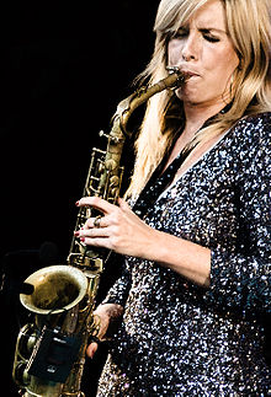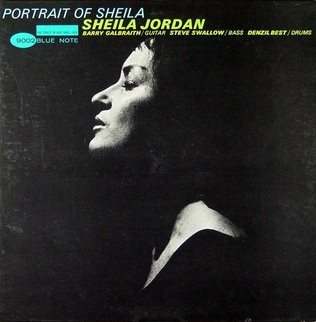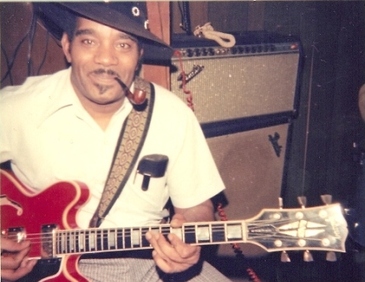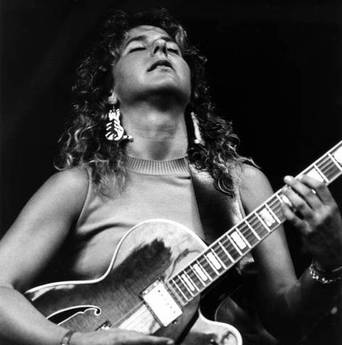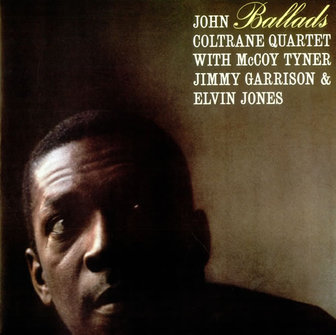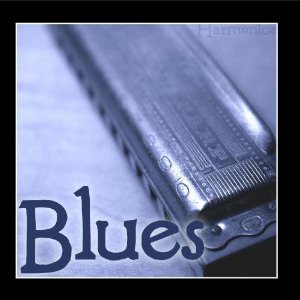BLUES ARTIST BIRTHDAY: Koko Taylor (1928) - Popularly referred to as the "Queen of the Blues", Koko Taylor was a Chicago blues musician, known primarily for her rough, powerful vocals and traditional blues stylings. Born Cora Walton in Shelby County, Tennessee, Taylor was the daughter of a sharecropper. She left Memphis for Chicago, Illinois in 1952 with her husband, truck driver Robert "Pops" Taylor. In the late 1950s, she began singing in Chicago blues clubs. She was spotted by Willie Dixon in 1962, and this led to wider performances and her first recording contract. In 1965, Taylor was signed by Chess Records where she recorded "Wang Dang Doodle," a song written by Dixon and recorded by Howlin' Wolf five years earlier. The song became a hit, reaching number four on the R&B charts in 1966, and selling a million copies. Taylor recorded several versions of "Wang Dang Doodle" over the years, including a live version at the 1967 American Folk Blues Festival with harmonica player Little Walter and guitarist Hound Dog Taylor. Taylor subsequently recorded more material, both original and covers, but never repeated that initial chart success. National touring in the late 1960s and early 1970s improved her fan base, and she became accessible to a wider record-buying public when she signed with Alligator Records in 1975. She recorded nine albums for Alligator, 8 of which were Grammy-nominated, and came to dominate the female blues singer ranks, winning twenty five W. C. Handy Awards (more than any other artist). After her recovery from a near-fatal car crash in 1989, the 1990s found Taylor in films such as Blues Brothers 2000 and Wild at Heart, and she opened a blues club on Division Street in Chicago in 1994, which relocated to Wabash Ave in Chicago's South Loop in 2000. Taylor influenced musicians such as Bonnie Raitt, Shemekia Copeland, Janis Joplin, Shannon Curfman, and Susan Tedeschi. In the years prior to her death, she performed over 70 concerts a year and resided just south of Chicago in Country Club Hills, Illinois. Her final performance was at the Blues Music Awards, on May 7, 2009. Koko Taylor died on June 3, 2009, after complications from surgery for gastrointestinal bleeding on May 19, 2009.
JAZZ ARTIST BIRTHDAY: John Gilmore (1935) - John Gilmore was an avant-garde jazz saxophonist best known for his tenure with Sun Ra and his Arkestra. He grew up in Chicago and played clarinet from the age of 14. He took up the tenor saxophone while serving in the U.S. Air Force from 1948–1952, then pursued a musical career, playing briefly with pianist Earl Hines. In 1953, he joined Ra and 40 years later, when the bandleader died, Gilmore was still there. His decision to play almost exclusively within the realm of Sun Ra's Arkestra long frustrated jazz observers who believed he could have made a bigger impact if he had had a solo career. His playing in the 1950s was an influence on the developing John Coltrane and Gilmore, who teamed up with Clifford Jordan for a 1957 Blue Note session, did spend 1964-1965 with Art Blakey's Jazz Messengers. However, other than a few sideman recordings in the 1960s (including with Freddie Hubbard, McCoy Tyner, Andrew Hill, and Pete LaRoca), Gilmore stuck with Ra, being well-featured both on hard bop and free-form material. He briefly headed the Arkestra after Ra's death. John Gilmore died on August 20, 1995.
JAZZ ALBUM RECORDED: Frank Lowe – Decision in Paradise (1985)
Track Listing:
1. Decision in Paradise
2. I’ll Whistle Your Name
3. Cherryco
4. Lowe-Ologie
5. You Dig!
6. Dues and Don’ts
Review by Scott Yanow at Allmusic:
The all-star lineup (tenor-saxophonist Frank Lowe, trumpeter Don Cherry, trombonist Grachan Moncur III, pianist Geri Allen, bassist Charnette Moffett and drummer Charles Moffett) practically guarantees that this music will be worth hearing. Although a touch more conservative than one might expect (more of an open-minded straight-ahead set than music emphasizing sound explorations), all six group originals are of interest including Lowe's unaccompanied performance on Butch Morris's "I'll Whistle Your Name" and Moncur's whimsical "You Dig."
JAZZ ARTIST BIRTHDAY: Red Rodney (1927) – Born Robert Roland Chudnick in Philadelphia, Pennsylvania, Red Rodney was a bop and hard bop trumpeter. He became a professional musician at 15, working in the mid-1940s for Jerry Wald, Jimmy Dorsey, Georgie Auld, Elliott Lawrence, Benny Goodman, and Les Brown. Rodney was inspired by hearing Dizzy Gillespie and Charlie Parker to change his style to bebop, moving on to play with Claude Thornhill, Gene Krupa and Woody Herman. In 1949 he accepted an invitation from Charlie Parker to join his quintet. As the only white member of the group he was billed as Albino Red when playing in the racially segregated southern United States. In 1950, Rodney joined the Charlie Ventura band. He also recorded extensively. In 1958, he left jazz because of diminishing opportunities, lack of acceptance as a white bebop trumpeter, and problems with the police about his drug addiction. He continued to work in other musical fields. Although Rodney continued to be paid well, he supported his drug habit through theft and fraud, eventually spending 27 months in prison. In the early 1970s, he was bankrupted by medical costs following a stroke and returned to jazz. Rodney also managed to give up drugs during the 1970s, although in 1975, he was incarcerated in Kentucky for drug offenses. While jailed, he gave music lessons to guitarist Wayne Kramer of the MC 5. From 1980 to 1982, Rodney made five highly regarded albums with multi-instrumentalist Ira Sullivan. In these albums, he started to play post-bop jazz. He continued to work and record into the 1990s. Most notably, Rodney performed with The Rolling Stones' drummer, Charlie Watts, who created a tribute to Parker. Rodney provided an early showcase for saxophonist Chris Potter, who was a regular member of his working group and only 19 years old when Rodney recorded "Red Alert" in late 1990. Red Rodney died on May 27, 1994.
JAZZ ALBUM RECORDED: Anthony Braxton – New York, Fall 1974 (1974)
Track Listing:
1. Side One Cut One
2. Cut Two
3. Cut Three
4. Side Two Cut One
5. Cut Two
6. Cut Three
Review by Scott Yanow at Allmusic:
Anthony Braxton, who switches here between alto, flute, clarinet, soprano and contrabass clarinet, is heard interpreting six of his originals in a wide variety of settings. Most accessible are his three performances with a quartet also including trumpeter Kenny Wheeler, bassist Dave Holland and drummer Jerome Cooper. Braxton also adds violinist Leroy Jenkins to the group on one piece and has a duet with Richard Teitelbaum's moog synthesizer. However, the most historic performance is by an unaccompanied saxophone quartet consisting of Braxton, Julius Hemphill, Oliver Lake and Hamiet Bluiett. This band (with David Murray in Braxton's place) would soon emerge as The World Saxophone Quartet. The wide amount of variety on this set makes this album a perfect introduction to Anthony Braxton's potentially forbidding but logical music.
JAZZ ARTIST BIRTHDAY: Gary Bartz (1940) – Born in Baltimore, Maryland, Gary Bartz is an alto and soprano saxophonist and clarinetist. Bartz's break into the music industry came when filling in with Art Blakey's band at Bartz' father's club in Baltimore. He graduated from the Baltimore City College high school and The Juilliard School. He has worked with Miles Davis, Charles Mingus, Max Roach, and Jackie McLean. His group, The Ntu Troop, combined soul, funk, the music of Africa, hard bop, and avant-garde jazz. In the liner notes to his 1994 album The Red and Orange Poems, jazz critic Stanley Crouch calls Bartz "one of the very best who has ever picked up the instrument." In 2005 he won a Grammy Award for playing on McCoy Tyner's album Illuminations. When not touring, Bartz teaches at the Oberlin Conservatory.
JAZZ ALBUM RECORDED: Duke Ellington and John Coltrane (1962)
Track Listing:1. In A Sentimental Mood 2. Take The Coltrane 3. Big Nick 4. Stevie 5. My Little Brown Book 6. Angelica 7. The Feeling Of Jazz
Review by Scott Yanow at Allmusic:
For this classic encounter, Duke Ellington "sat in" with the John Coltrane Quartet for a set dominated by Ellington's songs; some performances have his usual sidemen (bassist Aaron Bell and drummer Sam Woodyard) replacing Jimmy Garrison and Elvin Jones in the group. Although it would have been preferable to hear Coltrane play in the Duke Ellington orchestra instead of the other way around, the results are quite rewarding. Their version of "In a Sentimental Mood" is a high point, and such numbers as "Take the Coltrane," "Big Nick," and "My Little Brown Book" are quite memorable. Ellington always recognized talent, and Coltrane seemed quite happy to be recording with a fellow genius.
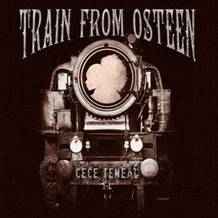 CECE TENEAL. She has been called the “Voice Of Neo-Blues” and it’s a title certainly worthy of a talent like CeCe Teneal. With a healthy blend of invigorating and soothing sounds, her music is not merely entertainment – it’s an experience. She has opened for B.B. King and shared the stage with Buddy Guy. Check out the YouTube link below for her version of The Beatles’ classic “Eleanor Rigby” (a song included on her album Train from Osteen). Her explosive sound is evident in the music she creates. http://youtu.be/jrZS4d33cvo.
BLUES ARTIST BIRTHDAY: Roosevelt “Booba” Barnes (1936) - Booba Barnes & His Playboys rocked the hardest of all the juke-joint combos in the Mississippi Delta during the '80s, and after the release of his debut album (The Heartbroken Man, 1990), Barnes took his act and his band north to Chicago, following the trail of his idols Howlin' Wolf and Little Milton. In a Guitar Player review, Jas Obrecht called Barnes "a wonderfully idiosyncratic guitar player and an extraordinary vocalist by any standard." He began playing music professionally in 1960, playing guitar in a Mississippi band named the Swinging Gold Coasters. Four years later, he moved to Chicago, where he performed in blues clubs whenever he could get work. Barnes returned to his home state of Mississippi in 1971, where he began playing bars and clubs around Greenville. He continued to play the juke joints of Mississippi for the next decade. In 1985 he opened his own joint, the Playboy Club. With Barnes and his backing band, the Playboys, acting as the house band, the bar became one of the most popular in the Delta. Soon, the band was popular enough to have a record contract with Rooster Blues. Their first album, The Heartbroken Man, was released in 1990. After its release, Booba Barnes & His Playboys toured the United States and Europe. They continued to tour, as well as occasionally record, until Roosevelt “Booba” Barnes died of cancer in April 1996.
JAZZ ARTIST BIRTHDAY: Sam Rivers (1923) - Few, if any, free jazz saxophonists approached music with the same degree of intellectual rigor as Sam Rivers; just as few have managed to maintain a high level of creativity over a long life. Rivers played with remarkable technical precision and a manifest knowledge of his materials. His sound was hard and extraordinarily well-centered, his articulation sharp, and his command of the tenor saxophone complete. Rivers' playing sometimes had an unremitting seriousness that could be extremely demanding, even off-putting. Nevertheless, the depth of his artistry was considerable. Rivers was as substantial a player as avant-garde jazz ever produced. In the early '60s, Rivers became involved with Archie Shepp, Bill Dixon, Paul Bley, and Cecil Taylor, all members of the Jazz Composer's Guild. In 1964, Rivers led his own session for Blue Note, Fuchsia Swing Song, which documented his inside/outside approach. In 1970, Rivers -- along with his wife, Bea -- opened a studio in Harlem where he held music and dance rehearsals. The space relocated to a warehouse in the Soho section of New York City. Named Studio Rivbea, the space became one of the most well-known venues for the presentation of new jazz. Rivers' own Rivbea Orchestra rehearsed and performed there, as did his trio and his Winds of Change woodwind ensemble. In 1976, Rivers began an association with bassist Dave Holland. The duo recorded enough music for two albums, both of which were released on the Improvising Artists label. Opportunities to record became scarcer for Rivers in the late '70s, though he did record occasionally, notably for ECM; his Contrasts album for the label was a highlight of his post-Blue Note work. In the '80s, Rivers relocated to Orlando, Florida, where he created a scene of his own. He formed a new version of his Rivbea Orchestra, using local musicians who made their living playing in the area's theme parks and numerous tourist attractions. From the '80s into the new millennium, Rivers recorded albums on his own Rivbea Sound label and other imprints as well, including a pair of critically acclaimed big band albums for RCA. Sam Rivers died of pneumonia on December 26, 2011.
JAZZ ALBUM RECORDED: Dave Holland Quintet – Points of View (1997) Track Listing:
1. The Balance
2. Mister B.
3. Bedouin Trail
4. Metamorphos
5. Ario
6. Herbaceous
7. The Benevolent One
8. Serenade
Review by Richard S. Ginell at Allmusic:
For Points of View, Holland expands his group into a quintet, shakes up the remaining personnel, and comes up with a marvelous example of thoughtful, dynamically shifting ECM chamber jazz. The new wrinkles in the sound are the return of Robin Eubanks on trombone, which gives the front line a richer, more balanced texture, and drummer Billy Kilson, who displays a wider, more animated range of rhythmic sympathies than did Gene Jackson on Dream of the Elders. Steve Nelson on vibes and marimba is the only returnee, and Steve Wilson contributes a dry tone on both alto and soprano saxes. The elegant textures so typical of ECM belie considerable stylistic variety here, including a gentle reversion to the progressively funky Holland band of the '80s on "Metamorphos"; a happy-go-lucky, easy-swinging tribute to Ray Brown, "Mr. B."; reflective, relaxed ballad work in "The Benevolent One," and Nelson's charming calypso/folk lullaby for marimba, "Serenade." Of course, Holland leaves himself a lot of solo space, which he fills with mobile eloquence.
BLUES ARTIST BIRTHDAY: Tarheel Slim (1924) - Talk about a versatile musician: Alden “Tarheel Slim” Bunn recorded in virtually every postwar musical genre imaginable. Lowdown blues, gospel, vocal group R&B, poppish duets, even rockabilly weren't outside the sphere of his musicianship. However, spirituals were Bunn's first love. While still in North Carolina during the early '40s, the guitarist worked with the Gospel Four and then the Selah Jubilee Singers, who recorded for Continental and Decca. Bunn and Thurman Ruth broke away in 1949 to form their own group, the Jubilators. During a single day in New York in 1950, they recorded for four labels under four different names! One of those labels was Apollo, who convinced them to go secular. That's basically how The Larks, one of the seminal early R&B vocal groups whose mellifluous early-'50s Apollo platters rank with the era's best, came to be. Bunn sang lead on a few of their bluesier items ("Eyesight to the Blind," for one), as well as doing two sessions of his own for the firm in 1952 under the name of Allen Bunn. As Alden Bunn, he encored on Bobby Robinson's Red Robin logo the next year. Bunn also sang with another R&B vocal group, The Wheels. And coupled with his future wife, Anna Sanford, Bunn recorded as The Lovers. "Darling It's Wonderful," their 1957 duet for Aladdin's Lamp subsidiary, was a substantial pop seller. Tarheel Slim made his official entrance in 1958 with his wife, now dubbed Little Ann, in a duet format for Robinson's Fire imprint ("It's Too Late," "Much Too Late"). Then old Tarheel came out of the gate like his pants were on fire with a pair of rockabilly raveups of his own, "Wildcat Tamer" and "No. 9 Train," with Jimmy Spruill on blazing lead guitar. After a few years off the scene, Tarheel Slim made a bit of a comeback during the early '70s, with an album for Pete Lowry's Trix logo that harked back to Bunn's Carolina blues heritage. It would prove his last. Alden “Tarheel Slim” Bunn died on August 21, 1977.
JAZZ ARTIST BIRTHDAY: Fats Navarro (1923) – Jazz trumpeter Theodore "Fats" Navarro, Jr. was a pioneer of the bebop style of jazz improvisation in the 1940s. He had a strong stylistic influence on many other players, most notably Clifford Brown. Navarro was born in Key West, Florida, to Cuban-Black-Chinese parentage. He began playing piano at age six, but did not become serious about music until he began playing trumpet at age of thirteen. He was a childhood friend of drummer Al Dreares. By the time he graduated from Douglass high school he wanted to be away from Key West and joined a dance band headed for the mid-west. Tiring of the road life after touring with many bands and gaining valuable experience, including influencing a young J. J. Johnson when they were together in Snookum Russell's territory band, Navarro settled in New York City in 1946, where his career took off. He met and played with, among others, Charlie Parker, one of the greatest musical innovators of modern jazz improvisation, but Navarro was in a position to demand a high salary, and did not join one of Parker's regular groups. He also developed a heroin addiction, which, coupled with tuberculosis and a weight problem (he was nicknamed "Fat Girl") led to a slow decline in his health and death at the age of twenty-six. Among others, Fats Navarro played in the Andy Kirk, Billy Eckstine, Benny Goodman, and Lionel Hampton big bands, and participated in small group recording sessions with Kenny Clarke, Tadd Dameron, Eddie "Lockjaw" Davis, Coleman Hawkins, Illinois Jacquet, Howard McGhee, and Bud Powell. In Charles Mingus' autobiography Beneath the Underdog, he struck up a deep friendship with Navarro while touring together. Fats Navarro died on July 6, 1950.
JAZZ ALBUM RECORDED: Joe Henderson – In Pursuit of Blackness (1970)
Track Listing: 1. Gazelle 2. Invitation 3. Mind Over Matter 4. No Me Esqueca
5. A Shade Of Jade
Review by Vincent Thomas at Allmusic:
The first 120 seconds or so of "Mind Over Matter" feature Joe Henderson, Stanley Clarke, and underground luminaries Lenny White (drums) and George Cables (keyboard) engaged in free-form, expressionist, abstract improv and then, in a short contained explosion, Henderson starts blowing his tenor like he's spitting out rounds of bullets from a gun. A torrent solo follows and, just when you think the song won't let up, in comes Curtis Fuller's trombone and then Pete Yellen's flute. The song ends with what almost sounds like the soundtrack to an absurd dream. It's a 13-minute tune broken up into suites and, although it may not be the album's best, it's possibly its most enthralling, and it typifies this album's place in Henderson's Milestone discography -- not his best, but enthralling. There are songs with nouveau-bop heads ("No Me Esqueca") and all-in burners ("A Shade of Jade"). Although the album is rhythm-heavy, it was recorded a couple years before Henderson's funk cloud would really thicken -- Joe was still swinging here ("Invitation"), which ain't so bad. Still, despite the obvious highlights, this undersold gem is a must-listen if only to check "Gazelle" (recorded live) and hear a head-nodding bassline from Ron McClure backing Henderson and Woody Shaw at their fieriest.
jazz artist birthdays: Chico Hamilton (1921) - A subtle and creative drummer, Chico Hamilton will probably always be better known for the series of quintets that he led during 1955-1965 and for his ability as a talent scout than for his fine drumming. Hamilton first played drums while in high school with the many fine young players (including Dexter Gordon, Illinois Jacquet, and Charles Mingus) who were in Los Angeles at the time. He made his recording debut with Slim Gaillard, was house drummer at Billy Berg's, toured with Lionel Hampton, and served in the military (1942-1946). He toured as Lena Horne's drummer (on and off during 1948-1955), and gained recognition for his work with the original Gerry Mulligan piano-less quartet (1952-1953). In 1955, Hamilton put together his first quintet, a chamber jazz group with the reeds of Buddy Collette, guitarist Jim Hall, bassist Carson Smith, and cellist Fred Katz. One of the last important West Coast jazz bands, The Chico Hamilton Quintet was immediately popular and appeared in a memorable sequence in the documentary Jazz on a Summer's Day (set at the 1958 Newport Jazz Festival) and the Hollywood film The Sweet Smell of Success. In 1966, Chico Hamilton started composing for commercials and the studios and he broke up his quintet. However, he continued leading various groups, playing music that ranged from the avant-garde to erratic fusion and advanced hard bop. In 1989, Chico Hamilton had a recorded reunion with the original members of his 1955 quintet (with guitarist John Pisano in Hall's place), and in the 1990s he made a number of records for Soul Note.
Slam Stewart (1914) - Leroy “Slam” Stewart was the most recorded jazz bassists of the 1940s. His first musical instrument was the violin but later he switched to the bass, studying at Boston Conservatory. Stewart, who had perfect pitch, mastered the technique of playing solos with a bow while humming along simultaneously at an octave higher, which made him a very popular showman and very famous in the jazz world. He got his nickname from the percussive “slamming” sound his strings made when they hit the neck of his bass while plucking them. In 1937, he moved to New York and there he met Slim Gaillard. Together, they became very popular on radio and records. Their song “Flat Foot Floogie” was a huge hit. During the 1930s and 1940s, he worked mostly in small groups, playing with Art Tatum, Lester Young, Benny Goodman, Charlie Parker, Dizzy Gillespie, among others. He also led his own group for a period of time which featured the up-and-coming pianist Erroll Garner. He also performed a couple of stunning duets with tenor saxophonist Don Byas at a 1945 Town Hall concert. During his career, he won many awards, including Down Beat’s Best Bassist Of The Year in 1945 and Berklee College of Music’s Highest Achievement Honor Award. Slam Stewart died on December 10, 1987.
JAZZ ALBUM RECORDED: Walt Dickerson – To My Queen (1962)
Track Listing:
1. To My Queen
2. How Deep Is The Ocean?
3. God Bless The Child
Review by Steve Huey at Allmusic:
To My Queen is Walt Dickerson's crowning achievement, a perfect balance between his intellectually advanced concepts and deeply felt passion. Dickerson had always displayed a fertile imagination, but there hadn't been much indication that his vision could be as expansive as it was on To My Queen. Never before had he attempted such extended, freely structured performances, which makes the album's consistency and focus all the more impressive. Like the foreground of a canvas, the listener's attention naturally falls on the title cut, a side-long, 17-and-a-half-minute opus (written in tribute to his wife, Elizabeth) that became Dickerson's signature piece. It's deliberate, spare, and tender, with the soloists accompanied by either a gentle swing or the barest hints of support. Dickerson's shimmering opening statements are followed by thoughtful explorations from pianist Andrew Hill and bassist George Tucker, while drummer Andrew Cyrille offers subtle, whisper-quiet shadings, save for occasional drum rolls that come off like momentarily swelling passions amidst all the introspection. The second half of the album maintains the mood set by the first, featuring an 11-minute version of "How Deep Is the Ocean" and a vibes/bass duet on "God Bless the Child" that trumps Dickerson's earlier effort in the same vein. This is arguably the finest quartet Dickerson ever led, not just because of the advanced musicianship and sympathetic interplay, but also because each member serves the material with taste and care. The whole album is swathed in a gauzy glow that speaks even more eloquently than its creator's conceptual ambition; this is music from the heart as well as the mind.
JAZZ ARTISTS' BIRTHDAYS: Joe Tempery (1929) - Most associated with the baritone saxophone and bass clarinet, Joe Temperley is the perfect musician to fill in for Harry Carney during recreations of Duke Ellington's music, a role that has often overshadowed his own fine voice. Temperley actually started on the alto and recorded on tenor with English bands led by Harry Parry (1949), Jack Parnell, Tony Crombie, and Tommy Whittle. He stuck to baritone during a long association with Humphrey Lyttelton's popular band (1958-1965). In 1965, Temperley moved to New York, working with a variety of big bands (including Woody Herman, Buddy Rich, Thad Jones-Mel Lewis, and Clark Terry). In 1974, he became the first replacement for Harry Carney with the Mercer Ellington Orchestra and then freelanced with the who's who of jazz including (starting in 1990) the Lincoln Center Jazz Orchestra under the direction of Wynton Marsalis. Temperley has several fine albums out as a leaderAmong them, Nightingale (1991), Sunbeam and Thundercloud with pianist Dave McKenna (1996), With Every Breath (1998) and Double Duke (1999). He is an original member of the Jazz at Lincoln Center Orchestra, and serves on the faculty of the Juilliard School for Jazz Studies. He is a guest mentor and a co-founder of the Fife Youth Jazz Orchestra (also known as FYJO) program in Scotland, which now enrolls 30 young musicians ages 7–18.
Steve McCall (1933) - One of the finest drummers in free jazz, Steve McCall was a subtle improviser who could keep a pulse going without actually stating the beat. He played early on with Lucky Carmichael, a blues singer. McCall met Muhal Richard Abrams in 1961 and became a founding member of the AACM in 1965. Based in Chicago, McCall played with hard bop groups, but made more of an impact performing with top avant-garde players, including Anthony Braxton, Leroy Jenkins, Joseph Jarman, Roscoe Mitchell, and Leo Smith. McCall was in Paris during 1967-1970, playing and recording with Braxton, Marion Brown, and Gunter Hampel. He returned to Chicago in 1970, was on a session with Dexter Gordon and Gene Ammons, and was in the trio Reflection with Henry Threadgill and Fred Hopkins. After another year in Europe, McCall went to New York in 1975, where he reunited with Threadgill and Hopkins and they formed the successful avant-garde group Air. McCall was with Air until the early '80s, also recording with Chico Freeman, Arthur Blythe, and David Murray. McCall played with Cecil Taylor's Unit in 1985 and performed regularly with Roscoe Mitchell's Quartet up until his death from a stroke. Although he was on a lot of important sessions (including dates with Joseph Jarman, Fred Anderson, and Murray's octet), Steve McCall never led an album of his own. In the late '90s, Chicago label Okka Disk released a 1980 duo recording of McCall and Anderson entitled Vintage Duets. Steve McCall died on May 24, 1989.
JAZZ ALBUM RECORDED: Henry Threadgill Sextett – Easily Slip Into Another World (1987)
Track Listing:
1. I Can’t Wait To Get Home
2. Black Hands Bejewelled
3. Spotted Dick Is Pudding
4. Let Me Look Down Your Throat Or
Say Ah
5. My Rock
6. Hall
7. Award The Squadtett
Review by Stephen Cook at Allmusic:
This Henry Threadgill title is one of three excellent recordings the jazz alto and flute player made for Novus in the late '80s. He is joined here by his stellar sextet (actually a septet) comprised of trumpeter Rasul Saddik, trombonist Frank Lacy, cellist Diedre Murray, bassist Fred Hopkins, and drummers Pheeroan Aklaff and Reggie Nicholson. Like avant-garde contemporaries Anthony Braxton and Muhal Richard Abrams, Threadgill created a seamless mix of improvisation space and complex arrangements to galvanize his musicians. Threadgill, though, went further by exploring a wider range of styles. The positive effects are made evident here by the group's inspired solos and ensemble playing on everything from the New Orleans' march "Black Hands Bejeweled" and Olu Dara's calypso-funk tune "I Can't Wait to Get Home" to the manic, free-form number "Hall" and sprechstimme-jazz piece "My Rock." Threadgill's acerbic and mercurial alto work seem to point to the dark humor underlying these and many of his other compositions, while Lacy's warbling and growling trombone statements bask in their inherent joy; the two sentiments made respectively clear on the expressionist-flavored "Let Me Look Down Your Throat or Say Ah" and the ecstatic, Raymond Scott-inspired "Award the Squadtett." Easily Slip Into Another World and Threadgill's other Novus titles (You Know the Number and Rag Bush and All) offer a fine introduction to the work of one of jazz's best and most underrated composers and improvisers.
JAZZ ARTISTS' BIRTHDAYS: Lovie Austin (1887) - One of the first important female bandleaders in jazz, Lovie Austin deserves to be much better known. Born Cora Calhoun, she studied music in college and then toured on the vaudeville circuit, settling in Chicago in 1923. During 1924-1926, she recorded frequently with her Blues Serenaders, a group that at various times had Tommy Ladnier, Bob Shoffner, Natty Dominique, or Shirley Clay on cornet; Kid Ory or Albert Wynn on trombone; and Jimmy O'Bryant or Johnny Dodds on clarinet, along with banjo and occasional drums. Fortunately, a Classics CD has collected all of those recordings. Austin (as house pianist for Paramount) also backed many blues singers (including Ida Cox, Ma Rainey, and Alberta Hunter). But after 1926, her recording activity largely came to a halt. When the classic blues craze began to wither in the early 1930s, Austin settled into the position of musical director for the Monogram Theater, at 3453 South State Street in Chicago where all the Theater Owners Booking Association acts played. She worked there for 20 years. After World War II, she became a pianist at Jimmy Payne's Dancing School at Penthouse Studios, and performed and recorded occasionally. In 1961 she recorded Alberta Hunter with Lovie Austin's Blues Serenaders, as part of Riverside's Living Legends series. Lovie Austin died on July 10, 1972.
Candy Dulfer (1969) - In a sense, Candy Dulfer has carried on in the family business: her father, Hans Dulfer, was a well-known tenor saxophonist in the Netherlands, and he began giving her lessons on the instrument while she was still a child. Few could have predicted, however, that Dulfer would become an international recording and performing star while still in her teens, and that her debut album, released before she was 21 years old, would sell more than one million copies worldwide. More remarkable still, Dulfer did so in a musical genre not known for setting sales records by young artists: fusion jazz. Helped along by her sound musical training and willingness to experiment with different musical forms, Dulfer has released a series of albums featuring collaborations with everyone from R&B legend Prince to jazz musician David Sanborn. Dulfer has also been aided by her blonde bombshell looks, prominently featured on her album covers over the years. Dulfer has refused to take her image too seriously, however, acknowledging to Europe magazine in 1996, "In the beginning, many people bought my CD thinking, ‘How cute, a girl playing saxophone.’ And then they found out that I actually play fusion music, a kind of music that they might not have bought otherwise." Although she had been offered recording contracts during her tenure with Funky Stuff, Dulfer waited until 1990 to sign with BMG records for a solo album. Released in 1990, Saxuality included the track "Lily Was Here," along with several funk and jazz-fusion songs co-written by Dulfer and a partner from Funky Stuff, Ulco Bed. Making the album into a family affair, Hans Dulfer even performed a saxophone duet with his daughter. A Grammy Award nomination for Best Pop Instrumental Recording helped the album earn a gold record in the United States, and it sold more than one million copies worldwide. Dulfer released What Does It Take in 1999. An album of jazz and funk tracks with danceable beats and glossy production values, it reconfirmed the artist’s appeal across an array of styles, including forays into house music and reggae. On her 2001 release, Girls Night Out, Dulfer continued her musical explorations with a guest appearance by legendary salsa musician Arturo Sandoval and several tracks that showed her love of contemporary R&B.
JAZZ ALBUM RECORDED: Sheila Jordan – Portrait Of Sheila Jordan (1962)
Track Listing:
1. Falling in Love With Love
2. If You Could See Me Now
3. Am I Blue
4. Dat Dere
5. When The World Was Young
6. Let’s Face The Music and Dance
7. Laugh, Clown, Laugh
8. Who Can I Turn To?
9. Baltimore Oriole
10. I’m A Fool To Want You
11. Hum Drum Blues
12. Willow Weep for Me
Review by Scott Yanow at Allmusic:
Sheila Jordan's debut recording was one of the very few vocal records made for Blue Note during Alfred Lion's reign. Accompanied by the subtle guitarist Barry Galbraith, bassist Steve Swallow, and drummer Denzil Best, Jordan sounds quite distinctive, cool-toned, and adventurous during her classic date. Her interpretations of Oscar Brown, Jr.'s "Hum Drum Blues" and 11 standards (including "Falling in Love With Love," "Dat Dere," "Baltimore Oriole," and "I'm a Fool to Want You") are both swinging and haunting. Possibly because of her originality, Sheila Jordan would not record again for over a dozen years, making this highly recommended set quite historic.
BLUES ARTIST BIRTHDAY: Louis Myers (1929) - Though he was certainly capable of brilliantly fronting a band, remarkably versatile guitarist/harpist Louis Myers will forever be recognized first and foremost as a top-drawer sideman and founding member of the Aces -- the band that backed harmonica wizard Little Walter on his immortal early Checker waxings. The Aces and Muddy Waters traded harpists in 1952, Wells leaving to play with Waters while Little Walter, just breaking nationally with his classic "Juke," moved into the frontman role with the Aces. Myers and The Aces backed Walter on his seminal "Mean Old World," "Sad Hours," "Off the Wall," and "Tell Me Mama" and at New York's famous Apollo Theater before Louis left in. Plenty of sideman work awaited Myers -- he played with Otis Rush, Earl Hooker, and many more. But his own recording career was practically non-existent; after a solitary 1956 single for Abco, "Just Whaling"/"Bluesy," that found Myers blowing harp in Walter-like style, it wasn't until 1968 that two Myers tracks turned up on Delmark. The Aces re-formed during the '70s and visited Europe often as a trusty rhythm section for touring acts. Myers cut a fine set for Advent in 1978, I'm a Southern Man, that showed just how effective he could be as a leader (in front of an L.A. band, no less). Myers was hampered by the effects of a stroke while recording his last album for Earwig, 1991's Tell My Story Movin'. He courageously completed the disc but was limited to playing harp only. His health soon took a turn for the worse, ending his distinguished musical career. Louis Myers died on September 5, 1994.
jazz artist birthday: Emily Remler (1957) - Initially inspired by rock music, she experienced a musical epiphany during her studies from 1974 to 1976 at the Berklee College of Music in Boston, Massachusetts. She began to listen to such legendary jazz greats as Wes Montgomery, Joe Pass, Pat Martino, Charlie Christian, Miles Davis and John Coltrane and took up jazz with a ferocious intensity, practicing almost constantly and never looked back. Remler's first significant and formative step as a fledgling professional musician was to settle in New Orleans where she played in blues and jazz clubs working with bands such as FourPlay and Little Queenie and the Percolators before beginning her recording career in 1981. She was championed by guitar great Herb Ellis, who referred to her as "the new superstar of guitar". Ellis introduced her to the world at the Concord, CA Jazz Festival in 1978. In addition to her recording career as a band leader and composer, Remler played with artists as diverse as Larry Coryell, with whom she recorded an album entitled Together, and the singer Rosemary Clooney. She played on Broadway for the Los Angeles version of the show 'Sophisticated Ladies' from 1981 to 1982 and produced two popular guitar instruction videos. She also toured for several years in the early eighties as guitarist for Astrud Gilberto. In 1985, she won the ‘Guitarist Of The Year’ award in Down Beat magazine’s international poll. In 1988, she was 'Artist in Residence' at Duquesne University and, in 1989, received Berklee's Distinguished Alumni award. Emily Remler, who was a heroin addict, died of heart failure at the age of 32 in Australia on May 4, 1990.
jazz album recorded: John Coltrane – Ballads (1962)
Track Listing:
1. Say It (Over and Over Again)
2. You Don’t Know What Love Is
3. Too Young to Go Steady
4. All or Nothing at All
5. I Wish I Knew
6. What’s New?
7. It’s Easy to Remember
8. Nancy (With the Laughing Face)
Review by Sam Samuelson at Allmusic:
Throughout John Coltrane's discography there are a handful of decisive and controversial albums that split his listening camp into factions. Generally, these occur in his later-period works such as Om and Ascension, which push into some pretty heady blowing. As a contrast, Ballads is often criticized as too easy and as too much of a compromise between Coltrane and Impulse! (the two had just entered into the first year of label representation). Seen as an answer to critics who found his work complicated with too many notes and too thin a concept, Ballads has even been accused of being a record that Coltrane didn't want to make. These conspiracy theories (and there are more) really just get in the way of enjoying a perfectly fine album of Coltrane doing what he always did -- exploring new avenues and modes in an inexhaustible search for personal and artistic enlightenment. With Ballads he looks into the warmer side of things, a path he would take with both Johnny Hartman (on John Coltrane & Johnny Hartman) and with Duke Ellington (on Duke Ellington and John Coltrane). Here he lays out for McCoy Tyner mostly, and the results positively shimmer at times. He's not aggressive, and he's not outwardly. Instead he's introspective and at times even predictable, but that is precisely Ballads' draw.
|
